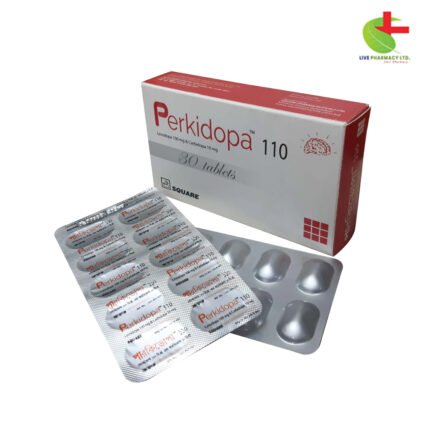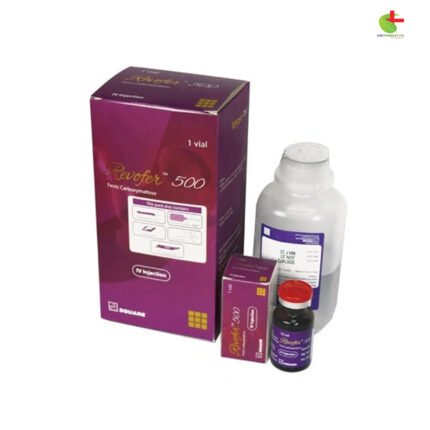Perkidopa 275
100.00৳ Strip
- Experience relief from Parkinson’s disease and syndrome symptoms with our Levodopa-Carbidopa tablets.
- Target rigidity, bradykinesia, tremors, and associated challenges effectively.
- Benefit from Levodopa’s conversion to dopamine in the brain and Carbidopa’s inhibition of peripheral metabolism.
- Tailored dosage recommendations ensure individualized treatment for enhanced symptom control.
- Trust in our medication for effective relief and improved quality of life.
 Brand
Brand
|
Square Pharmaceuticals PLC |
|---|---|
 Generics
Generics
|
Levodopa + Carbidopa |
This medication is recommended for the management of Parkinson’s disease and syndrome. It effectively alleviates many symptoms associated with parkinsonism, especially rigidity and bradykinesia. Additionally, it aids in managing tremors, difficulty swallowing, excessive saliva production, and instability while standing, all linked with Parkinson’s disease and syndrome. Furthermore, combining levodopa and carbidopa before physiotherapy enhances motor recovery following a stroke.
Description
Levodopa, the precursor to dopamine, penetrates the blood-brain barrier and converts to dopamine within the brain. Carbidopa acts as a dopa decarboxylase (DDC) inhibitor, reducing the peripheral breakdown of levodopa into dopamine. Consequently, more levodopa reaches the brain for conversion.
Dosage & Administration
For 100/10 mg tablets: Start with one tablet three or four times daily. Some patients may require gradual dosage adjustment to achieve the optimal carbidopa dosage. Increase the dosage by one tablet daily or every other day until a maximum of eight tablets (two tablets four times daily) is reached.
For patients initiating therapy with 250/25 mg tablets: Begin with one-half tablet taken once or twice daily, adjusting as needed to reach the optimal response. For patients already taking over 1500 mg of levodopa daily, the starting dose is typically one tablet of 250/25 mg three or four times a day.
Maintenance dose: Individualize therapy based on the desired response. When additional levodopa is needed, substitute with 250/25 mg tablets at a dosage of one tablet three or four times daily. If necessary, increase the dosage by half to one tablet every other day, up to a maximum of eight tablets daily. Limited experience exists with total daily carbidopa dosages exceeding 200 mg.
Interaction
Symptomatic postural hypotension may occur when adding carbidopa-levodopa to existing antihypertensive regimens, necessitating adjustments in antihypertensive dosage. Rare reports suggest adverse reactions, including hypertension and abnormal movements, with concurrent use of tricyclic antidepressants and carbidopa-levodopa. Studies indicate reduced levodopa bioavailability when taken with ferrous sulfate or ferrous gluconate. Various medications, including dopamine-2 receptor antagonists and isoniazid, may diminish levodopa’s therapeutic effects. Severe orthostatic hypotension may result from combining selegiline with carbidopa-levodopa.
Contraindications
Carbidopa-levodopa tablets are contraindicated in patients hypersensitive to carbidopa and levodopa or those with narrow-angle glaucoma. Due to a potential risk of activating malignant melanoma, avoid use in patients with suspicious or undiagnosed skin lesions or a history of melanoma.
Side Effects
Common adverse effects include dyskinesias (abnormal involuntary movements) and nausea. Other possible adverse effects involve various body systems, including cardiovascular, gastrointestinal, hematologic, hypersensitivity, nervous system, respiratory, skin, and urogenital.
Pregnancy & Lactation
The effects of carbidopa-levodopa on human pregnancy remain unknown, but both levodopa and combinations of carbidopa and levodopa have caused malformations in animal studies. Caution is advised in pregnant or nursing women, weighing potential benefits against risks.
Precautions & Warnings
Carbidopa-levodopa is not recommended for treating drug-induced movement disorders. It may be administered to patients already receiving levodopa alone, but levodopa must be stopped at least 12 hours before starting carbidopa-levodopa. Dyskinesias may occur in patients switching from levodopa alone to carbidopa-levodopa. Monitor all patients for depression and suicidal tendencies. Use caution in patients with cardiovascular, pulmonary, renal, hepatic, endocrine, or peptic ulcer diseases, convulsions, or psychoses.
Use in Special Populations
The safety and effectiveness of carbidopa-levodopa in individuals under 18 years old have not been established; therefore, it’s not recommended for use in children.
Therapeutic Class
Antiparkinson drugs
Storage Conditions
Store in a cool, dry place, away from light.













Reviews
There are no reviews yet.